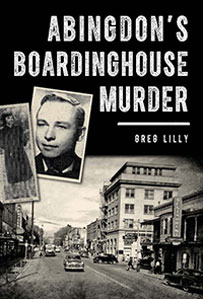

By Bonny Gable
Bonny Gable is a former theater professor and freelance writer based in Bristol, Virginia. www.bonnygable.com
Greg Lilly has an intense interest in people, curiosity about the rich intricacies of life, and a love for literature. Ironically, his writing career originated in his job working with computer technology. His human interests crept into his left-brained profession when he began adding colorful facets to the technical manuals he wrote.
Lilly’s first job, with a large corporation, involved teaching classes in the company’s computer systems. This included writing the manuals for those systems. “I always felt the technical writing seemed dry,” Lilly says. “In an introduction to a new system, I created characters and a storyline of how the new system would make the associates’ lives easier. And I added a little drama to the personal lives of the characters to keep people reading. I was called into the VP’s office over that one.”
Lilly’s job remained safe, but the vice president suggested he try writing fiction after work hours. He joined a critique group and began his fiction journey. Over the years he won several literary contests and published in fiction magazines and anthologies. His first book was published in 2004.
A wide range of interests led Lilly to write in many genres: mystery, adventure, Appalachian literature and historical fiction. He also authored the “Tales of the Abingdon Wolves” trilogy for middle-grade readers and a writing reference book.
His attraction to writing in the true crime genre was a natural outflow from exploration of the human condition in his other work.
“True crime stories are wonderful sources for fiction writers,” Lilly says. “The actions of real people in a crime might seem outrageous, but as a writer digs into their lives for circumstances, past emotional trauma, and ultimately motive, the writer unearths a logical path to the tragedy. Instead of saying, ‘I would never do that,’ you end up saying, ‘I get it. I understand why that outcome seemed to be the only avenue.’ Empathy comes from the understanding that could have been me.”
Lilly’s introduction to the crime that led to his writing “Abingdon’s Boardinghouse Murder” came about in a circuitous manner. When moving back to Southwest Virginia to be closer to family, his real estate agent wanted to show him the “murder house” on Valley Street in Abingdon. He passed but bought a house a few blocks away.
Lilly recalls, “During the pandemic, the new owners of that house had a Fourth of July cookout. Neighbors from up and down the street attended, and the conversation soon turned to the house’s history. Everyone had a theory or a really good story about the trial and conviction of the woman who ran the boardinghouse in 1945.”
Lilly was intrigued, and soon hooked.
“This tale had all the elements of historical fiction with the twists of a true story,” Lilly says. “The Great War (WWI), the Spanish flu pandemic, World War II, and the changing role of women—all set the stage of the culture that led to this tragedy. Plus, everyone still has an opinion about Jimmy [the victim] and Helen [the murderess]. Usually, those opinions were formed by hand-me-down tales from grandparents or parents that had grown wilder with each telling, as most storytelling does. I wanted to know the facts.”
Lilly scoured newspaper archives and everything available at the Historical Society of Washington County, which he characterizes as “a grand repository of knowledge about our region’s past.” He also searched for any descendants of the people involved. He discovered some surprising connections.
“I found that the granddaughter of Helen had been one of my favorite high school teachers,” Lilly relates. “We reconnected and talked about what her family had said, and not said, about the investigation, arrest and trial. These interviews put a human face on the heartbreak. I wanted to treat all involved with integrity and accuracy. I could imagine Helen as my grandmother or Jimmy as an uncle.”
Lilly explains what he found most challenging about writing this book.
“Keeping fact and creative techniques in line. With creative non-fiction, which most true crime is, writers need to bridge the gap between documented facts. The narrative and the scenes created must be anchored in hard annotations of the people, the time, the culture and the situation.”
When asked how he feels about living in the town where the crime took place, Lilly answered, “Conflicted. I love that I can walk the alleys and streets; visit the homes, churches, cemeteries and businesses; and drive along the same roads of the people I write about. On the other hand, my neighbors have their opinions of the tale, a jaundiced viewpoint that the research and facts show may have had a kernel of truth, but the generational retelling has warped it beyond recognition.
“No matter what you may have heard, keep an open mind. This is the first time since the 1946 trial that facts have been researched, collected and examined as a whole — with a neutral point of view. I brought in no preconceived opinions to the analysis.”
While Lilly invites readers to examine the story in this light, he is candid about his own takeaway from living intimately with the facts in order to tell the story.
“The reality is Helen Clark was a lovely woman who had been through a life of loss and trauma. Jimmy Newton survived Guadalcanal and then was sent home to care for his injuries, both physical and emotional, with whatever resources he could find. The convergence of these two ended in a heartbreaking situation that has rippled through the families to this day.”
A book launch for “Abingdon’s Boardinghouse Murder” is held Saturday, June 1, from 11 a.m. to 2 p.m. at The Arts Depot in Abingdon.